Sometimes called the “Army Zero” by American pilots, and overshadowed by its Navy rival, the Mitsubishi A6M “Zero”, the “Hayabusa” was the most common (and deadly) adversary for the Allied pilots during the Malayan campaign. Pilots flying the Ki-43 shot down more Allied aircraft than in any other Japanese fighter. And almost all the JAAF’S aces achieved most of their kills in it.
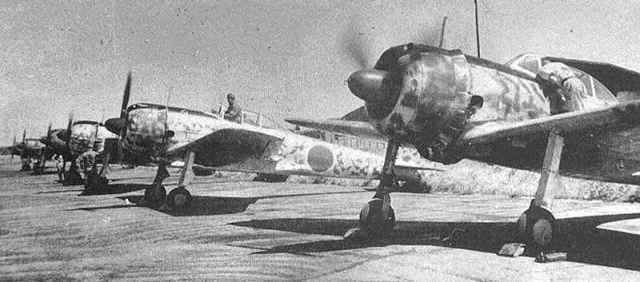
The Nakajima Ki-43 Hayabusa (隼, “Peregrine Falcon”, Army designation “Army Type 1 Fighter” 一式戦闘機) originated in a Japanese Imperial Army specification, issued to Nakajima Hikoki K. K. in December 1937 for a replacement of the nimble Nakajima Ki-27. They wanted more speed (501 km/h or 311 mph), better time to climb (5,000 m or 16,405 ft in 5 minutes), and a range of 1,288 km (800 mi). The specified armament comprised two 7.7 mm machine guns and the new airplane had to maneuver as well as the Ki-27.
The birth of the Hayabusa was not easy. Nakajima’s chief designer Hideo Itokawa and his team delivered the first prototype of the Ki-43 on December 12, 1938. After its maiden flight in January 1939 and subsequent tests, the Japanese Army pilots reported that it was unresponsive to control, stiff, slow and too heavy. The cockpit canopy was awkward and the landing gear difficult to use. Two prototypes followed in February and March 1939, but as there were no significant improvements, the Army rejected the Ki-43.
For a time, it seemed that Nakajima would abandon the Ki-43. However, the firm decided to salvage their investment and began work on the first of a series of ten development aircraft. The series of changes introduced during this process saw the Ki-43 turn into an excellent design.
Apart from the Ha-105 radial engine, two 12.7mm machine guns and a treated duralumin outer skin, the most important innovation was the introduction of ‘butterfly’ flaps. When the pilot deployed these tapered flaps at speed, they helped to pitch the airplane’s nose up without generating too much drag, and the turning circle of the Ki-43 shrank dramatically. The next round of evaluation left the test pilots highly impressed and the army ordered the Ki-43-I into production as Army Type 1 Fighter with a Nakajima Ha-25 engine and to be armed with two 7.7mm machine guns.
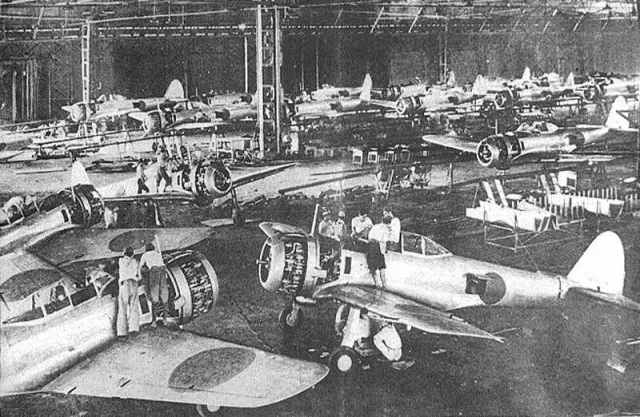
“Hayabusa” productionline at the Tachikawa factory, 1943
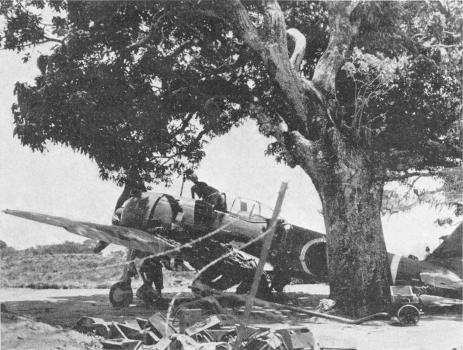 The first unit equipped with the Ki 43-I was the 59th Sentai at Hankow Airfield, during June–August 1941, flying operational sorties over Hengyang on October 29, 1941.The second unit to re-equip with the new Aircraft was the 64th Sentai, from August to November 1941.
The first unit equipped with the Ki 43-I was the 59th Sentai at Hankow Airfield, during June–August 1941, flying operational sorties over Hengyang on October 29, 1941.The second unit to re-equip with the new Aircraft was the 64th Sentai, from August to November 1941.
The Ki-43 initially enjoyed air superiority in the skies of Malaya, Netherlands East Indies, Burma and New Guinea. This was partly due to the better performance of the Oscar, partly because of the Japanese pilot’s battle experience and partly due to the relatively small numbers of combat-ready Allied fighters.
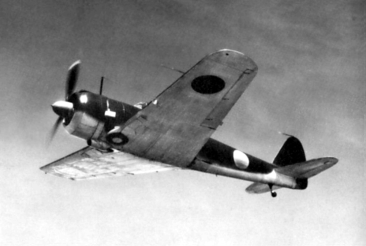 In combat, the Hayabusa was superior to any opposing fighter it encountered in the early part of the war. Like the Zero, the Hayabusa turned and stalled better than most fighters to see combat in the war. Low gross weight was an important factor in this performance. Nakajima achieved it by building a spare, tidy airframe powered by a relatively small engine, no pilot armor and no self-sealing fuel tanks.
In combat, the Hayabusa was superior to any opposing fighter it encountered in the early part of the war. Like the Zero, the Hayabusa turned and stalled better than most fighters to see combat in the war. Low gross weight was an important factor in this performance. Nakajima achieved it by building a spare, tidy airframe powered by a relatively small engine, no pilot armor and no self-sealing fuel tanks.
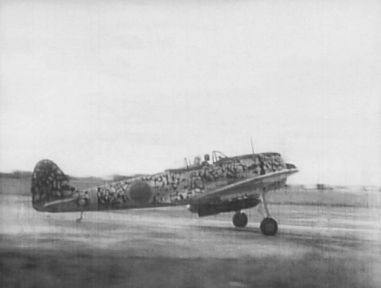
A Ki.43 taking off, probably on a Kamikaze mission, to judge by the large bomb
These sacrifices would cost dearly when the Allies began to field airplanes with heavy firepower. Despite these drawbacks, the Hayabusa remained formidable, even as more experienced Allied pilots and better aircraft entered the fray. The type was well liked in the JAAF because of its pleasant flight characteristics and excellent maneuverability. Almost all JAAF fighter aces claimed victories with Hayabusa in some part of their career.
At the end of the war, most Hayabusa units received Ki-84 Hayate “Frank” fighters, but some units flew the Hayabusa to the end of the war. And a large percentage of Ki.43’s was used as Kamikazes during the final months of the conflict.
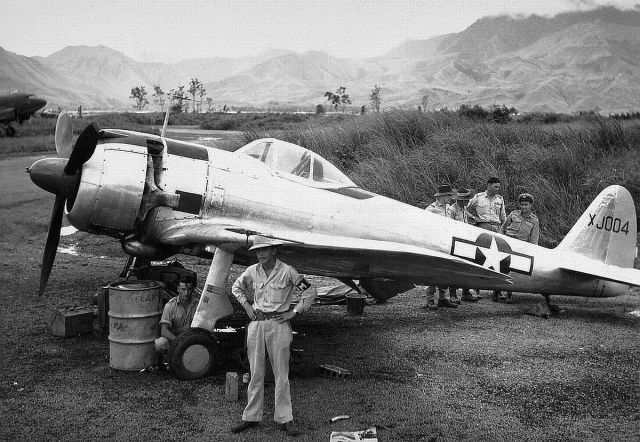
A captured Ki.43 in USAAF markings, guarded by MP’s at Clark Field, Philiipnes
The Ki-43 was the most widely used Army fighter, and equipped 30 Sentai and 12 Chutai (independent squadrons). The aircraft would be produced at three factories. Nakajima produced the most aircraft, completed 3,239. The Army’s First Army Air Arsenal (Tachikawa Dai-Ichi Rikugun Kokusho) was the least successful, producing 49 aircraft between October 1942 and November 1943. Finally the Tachikawa Hikoko K.K. (Tachikawa Aircraft Company) produced the bulk of the later aircraft, completing 2,629 aircraft between May 1943 and the end of the war.
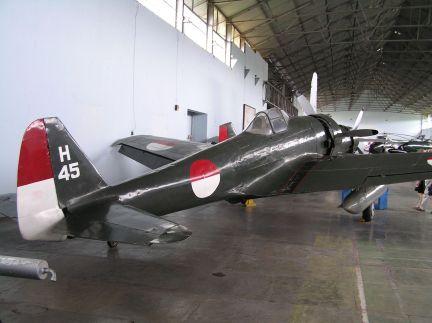
An AURI (Indonesian Air Force) Nakajima Ki.43 in the National Military Museum in Jakarta (Java)
After the war, the French Air Force in Indochina equipped two squadrons with captured / abandoned Ki.43’s and used them in their offensives against Viet Minh rebels. And in the Netherlands East Indies, the newly declared Indonesian government took over some abandoned Ki.43’s and used them during their fight against Dutch forces.
Hayabusa Aces
The top-scoring Hayabusa pilot was Sergeant Satoshi Anabuki with 39 confirmed victories, almost all scored with the Ki-43. Another remarkable Hayabusa pilot was Lt. Col. Tateo Kato, CO of the 64th Sentai. Popularly hailed as the “War God,”
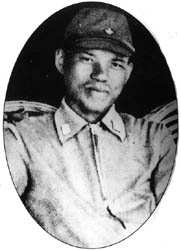 Kato was the most celebrated pilot of the Imperial Japanese Army Air Force in World War II. His career as a fighter pilot peaked during the Sino – Japanese war when, flying a Kawasaki Ki 10 biplane, he downed four Polikarpov I-15s on March 25, 1938. His squadron converted to Nakajima Ki.27’s and by May 1938, Kato’s unit had claimed 39 enemy craft for a loss of only three Ki 27s—with Kato himself claiming four more kills. He then rotated back to Japan with a final tally of nine, which made him the leading ace of the war.
Kato was the most celebrated pilot of the Imperial Japanese Army Air Force in World War II. His career as a fighter pilot peaked during the Sino – Japanese war when, flying a Kawasaki Ki 10 biplane, he downed four Polikarpov I-15s on March 25, 1938. His squadron converted to Nakajima Ki.27’s and by May 1938, Kato’s unit had claimed 39 enemy craft for a loss of only three Ki 27s—with Kato himself claiming four more kills. He then rotated back to Japan with a final tally of nine, which made him the leading ace of the war.
During the summer of 1941 Kato was appointed commanding officer of the 64th Sentai, then re-equipping with Ki.43’s. The Sentai began the war by escorting naval vessels to Malaysia in preparation for the conquest of Malaya and Singapore. Over the next few weeks the 64th Sentai skirmished repeatedly with Brewster Buffalos (and later Hawker Hurricanes) and achieved air superiority. The 64th Sentai was hurriedly sent to Bangkok, Thailand, to reinforce the 77th Sentai (flying Ki.27’s) , On December 23, 1941, they escorted several heavy bomber formations on a large raid over Rangoon—where they ran straight into the P-40’s of the AVG or Flying Tigers. The American pilots later claimed 16 bombers and two Ki 43 fighters in exchange for four British and two American fighters.
The 64th Sentai transferred back to Malaya and the East Indies where Kato’s men eliminated British and Dutch aircraft from Sumatra and Java during January and February 1942. Kato was promoted to Lieutenant Colonel in March, and his aerial exploits caused such public adoration that Kato became hailed as the “War God”, a singularly unusual tribute in Japanese culture. Kato himself was a fearless, charismatic individual, unique among officers of his grade for accompanying his men into combat. Without exception, he always led by example and was highly prized by squadron mates.
During March and April 1942, the 64th continued to battle in Burma, notably against the P-40’s of the AVG. The end of Kato’s career came on May 22, when Kato in company with two other Hayabusas went after a lone RAF Bristol Blenheim that had dropped some bombs on Akyab airfield. As Kato pulled up from his raking pass, the British tail gunner shot him down in flames.
The Japanese people perpetuated his memory through the song “Kato Hayabusa Sentoki Tai” (Kato’s Fighter Air Group). At the time of his passing, Kato was credited with 18 kills. The “War God” was also posthumously elevated two grades to major general, a standard Japanese practice. More important, the lessons he taught the 64th Sentai allowed it to continue fighting successfully without him. It would emerge as the most famous Japanese army air force unit of World War II.
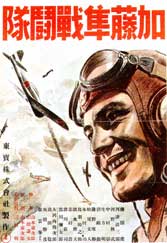
Another unique fact is that, in 1944, a movie was made to honor him. The black and white movie is called Kato Hayabusa Sento-Tai (加藤隼戦闘隊) or ‘Colonel Kato’s Hayabusa Squadron’ and is available on U-Tube. Here’s the link:

To fully understand what went went on during WWII, we need to look at the other side too. Excellent post!
LikeLike
The Oscar Ki 43-I did 308 mph at 16,404 ft. The contemporary Zero-11 did 319 mph at 11,811 ft, and the Zero-21 did 331 mph at 14,927 ft. So for 2 years and a quarter the Oscar was slower than the Zero from summer 1940.
Then in Nov, 1942 the Ki43-II entered service with a speed of 341 mph at 19,685 ft. The Zero-32 was in service since April, 1942 and did only 338 mph and since Aug, 1942 the Zero-22 did only 335 mph. So the Oscar was faster than the Zero for about a year.
Then in Oct, 1943 the Zero 52 entered service and did 351 mph at 19,685 ft.
Nov, 1943 the Zero 52a did 348 mph, and the Zero 52b in April 1944 with an even slower 346 mph. The Ki 43-IIIa came along in May 1944 and flew 358 mph at 22,000 ft. This Oscar beat the speed of the Zero for the rest of the war, for 1 year and 3 months.
The Zero-52c only went 336 mph at 16,404 ft in July 1944.
The Zero-62 in May 1945, did 337 mph at 19,685 ft.
The Zero-63 did 346 mph.
The Zero-64 did not see action. It went 356 mph at 19,685 ft. Still slower than the Ki 43-IIIa.
The majority of Oscars were armed with mixed machine guns, one 7.7mm and one 12.7mm. WoF per second was 0.363 kg synchronized. Most pilots didn’t like the 12.7mm slow rate of fire through the prop: 425 r/m.
The 7.7mm went 657 r/m. So they compromised. There were versions with twin 7.7mm and twin 12.7mm guns, but the evidence of ammo supplies at the air bases is lacking in comparison.
The WoF for twin 7.7mm synchronized was 0.240 kg/s and 0.486 kg/s for twin 12.7mm guns.
The Oscar prototype had armor but this was not put into production models until the Ki 43-II.
The combination of great acceleratio, 11 second full turn and good roll-rate made it a dog fighter on par with biplanes. Climb was great too. But dive was only 372 mph.
It was the choice of many aces to the end of WW2. It accounted for half of all the Japanese air victories even though the Zero outnumbered it 2 to 1, not to mention any other Japanese fighters. Something to contemplate.
LikeLike
Thanks for the additional information Ron; I appreciate it.
Robert
LikeLike